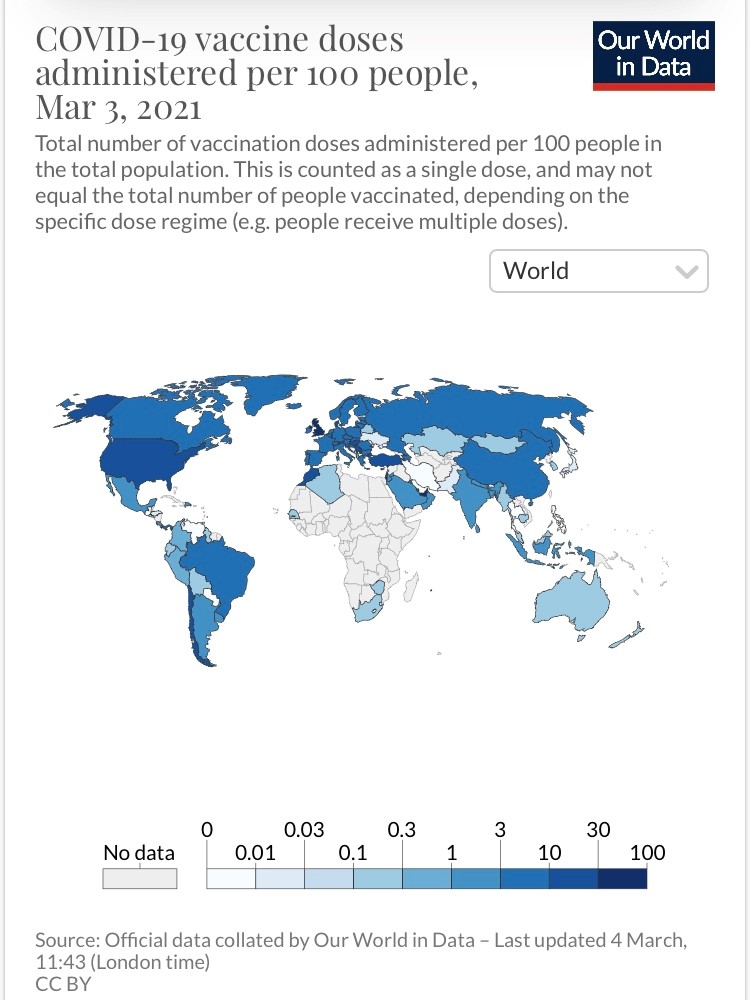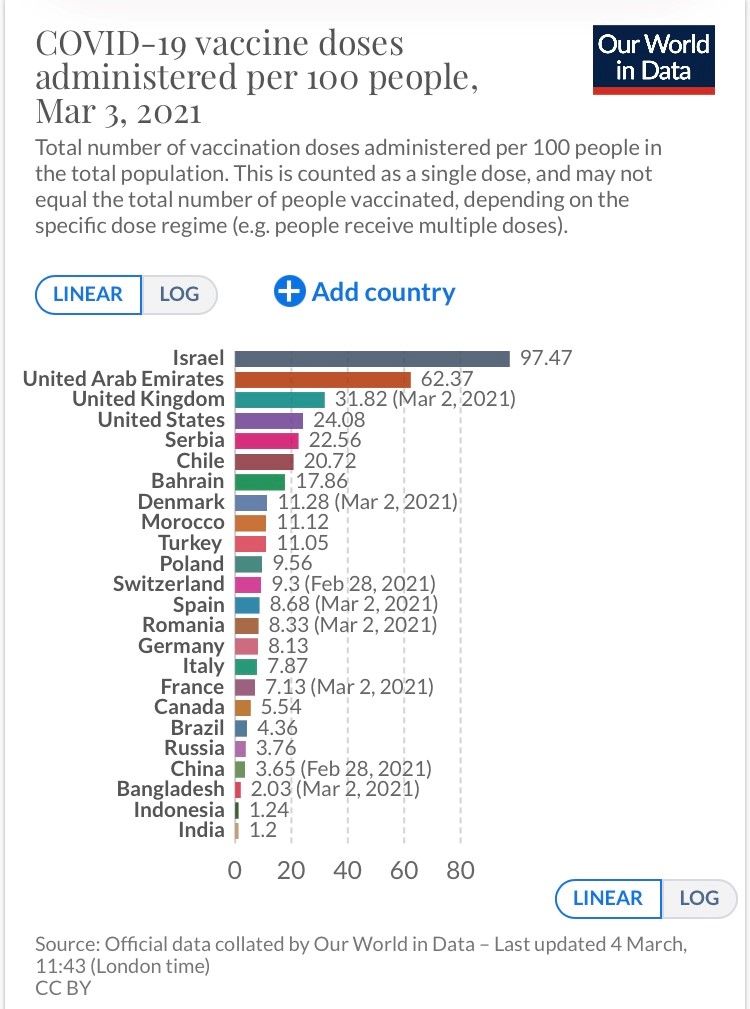A. Yes, there are new updates! And while there is reason for optimism, there is still a long, long way to go in many countries.
We previously posted about the status of the global vaccine rollout roughly a month ago. Some countries like Israel and the United Arab Emirates (UAB) were doing a great job administering vaccines, but the majority of countries in Latin America, Africa, as well as Australia and New Zealand, had not administered a single dose.
Now a month later, several countries from these regions have begun vaccinating their residents, and countries like the U.S., which experienced a slow start, have started to pick up the pace.
Nevertheless, based on the map from Our World in Data, it’s clear there’s still a lot of work to do to ensure that more countries have access to the vaccines, and also enough supply to vaccinate a majority of their residents.
❇️ What strategies are being used to expand global access to vaccines?
One word: COVAX.
COVAX is a global sharing program by the WHO and other international organizations, which aims to supply billions of vaccine doses to poorer countries. It was created so that poorer countries which have struggled to compete with high-income countries to buy COVID-19 vaccines on the open market can get them for free.
Last week, Ghana and the Ivory Coast became the first countries in the world to receive COVID-19 vaccines shipped through COVAX (specifically, the AstraZeneca/Oxford (Az/Oxford) vaccine licensed and manufactured by the Serum Institute of India). Between Feb-May 2021, the program aims to deliver 237 million doses of the AZ/Oxford vaccine to 142 participating countries, with 92 of them qualifying to get the vaccine for free under the program.
❇️ What are the challenges?
1️⃣ Although high-income countries have pledged to provide aid to COVAX, Dr. Tedros, head of the WHO, has said that the program remained $23 billion short of what is needed.
2️⃣ COVAX is also struggling to compete with higher-income countries that are buying up much of the available supply of vaccine.
3️⃣ Countries also cannot rely on COVAX to vaccinate a majority of their residents. The program has pledged to supply enough doses for at least 20% of countries’ population, but this is nowhere near what will be needed to achieve herd immunity.
Bottom line – more aid, combined with other cost-savings measures, will clearly be needed to improve global vaccine coverage.
❇️ Why should high-income countries care about global vaccine rollout?
Aside from moral arguments related to helping those less fortunate, there are also epidemiological and economic reasons.
EPIDEMIOLOGICAL: As we noted in our previous post, the virus doesn’t adhere to national boundaries. Allowing the virus to circulate unchecked provides a breeding ground for the emergence of variants that can bypass the immunological defenses provided to us by the vaccines. The best way to stop the spread of COVID-19, and to prevent new variants, is to vaccinate as many people, and as quickly as possible, all over the world.
ECONOMIC: A team of economists recently published a study on the global economic consequences of not vaccinating all countries around the world (linked below). The study found that allowing the pandemic to continue in poor countries is likely to be worst for industries in high-income countries that depend on global supply chains, including automotive, textiles, construction, and retail. For low- and middle-income countries, it’s the service sectors that will be impacted, which include the dining, travel, and hospitality industries.
As quoted by John Denton of the International Chamber of Commerce in the linked article, “Purchasing vaccines for the developing world isn’t an act of generosity by the world’s richest nations. It’s an essential investment for governments to make if they want to revive their domestic economies.”
❇️ As always, we’ll continue to post updates on the international vaccine landscape as the situation evolves.
🌍For our followers outside of the US, tell us how the vaccine rollout is going in your country!
LINKS:
Our World in Data COVID-10 Global Vaccination Stats
Study of economic consequences (National Bureau of Economic Research)
Relate news media:




